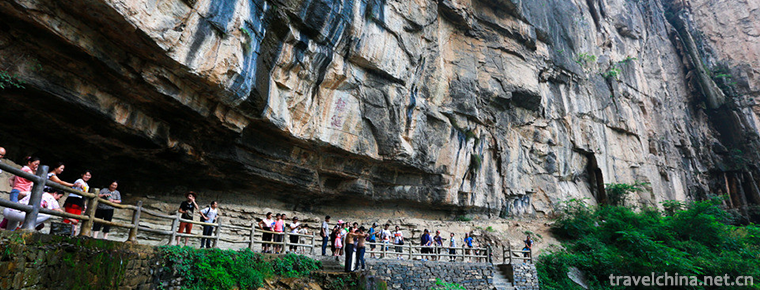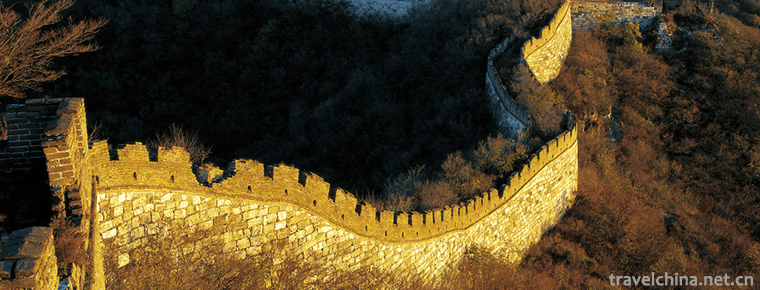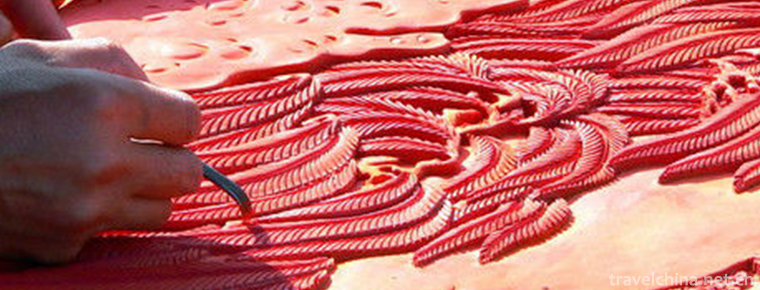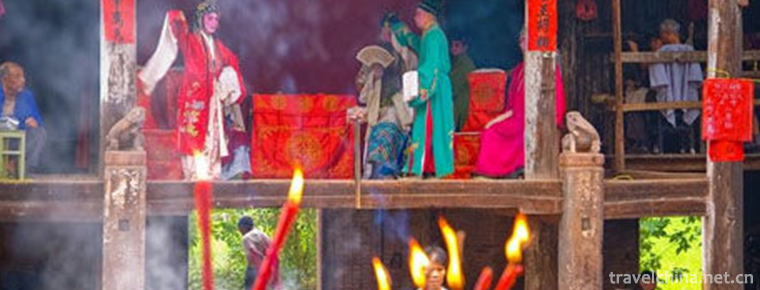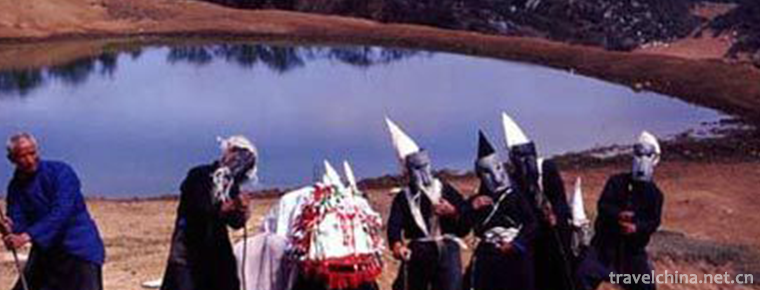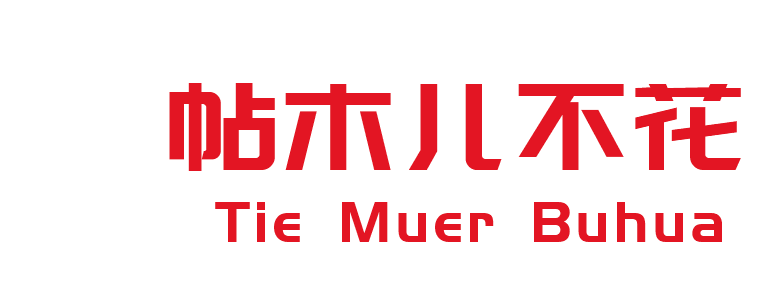Xishuangbanna Primitive Forest Park
Xishuangbanna Primitive Forest Park
Xishuangbanna Primitive Forest Park, located in the east of Jinghong and north of Lancang River, is 8 kilometers away from the seat of the state capital. It is the nearest primitive forest in the whole state to Jinghong City. The park is built on the basis of 25,000 Mu tropical Valley rain forest. The forest coverage rate in the park is over 98%, which is a natural oxygen bar.
There are Valley rainforest, peacock flying, folk songs and dances, gourmet food, water splashing Carnival and other projects in the park. It is one of the largest comprehensive ecological tourist attractions in Xishuangbanna.
With nature, ecology, environmental protection, leisure and health as the main elements of the fashion life concept, through the winter national culture season, spring peacock culture season, summer Rainforest Culture season and autumn national costume season to reflect.
Garden facilities
Peacock Villa, built in accordance with the four-star standard, is designed and constructed in the form of a leisure and vacation center to show the green life in the embrace of the rainforest. The villa has 51 rooms, including 45 standard rooms and 6 suites. The aquatic restaurant can accommodate 200 people at the same time. It can provide all kinds of ethnic dishes and unique Dai parents'table banquets. There are two medium-sized multi-functional conference halls in the villa, with professional central control equipment and audio equipment, which can provide various multimedia services.
Traffic information
External traffic
At the main entrance bus stop of Agricultural Bank opposite Jingyong Hotel in Jinghong City, take the bus of Flower Garden-Forest Park and get off at the end. From 8:00 to 12:00, the departure time is 15:00, 16:30, 17:30, 5 yuan per person.
Internal traffic
There are battery cars in the scenic area, 40 yuan per person per journey and 70 yuan per person for the whole journey, stopping by scenic spots along the way.
Xishuangbanna
Xishuangbanna, the ancient Dai language is "Mengbalanasi", meaning "ideal and magical paradise".
Xishuangbanna Dai Autonomous Prefecture, located in the southernmost part of Yunnan Province of the People's Republic of China, is a minority Autonomous Prefecture under the jurisdiction of Yunnan Province.
Located between 21 10', 99 55 and 101 50 in the North latitude, it belongs to the tropical humid area south of the Tropic of Cancer. The East and West are connected with Jiangcheng County and Puer City; the northwest is adjacent to Lancang County; the southeast, South and southwest are respectively connected with the mountains and rivers of Laos and Myanmar, adjacent to Thailand and Vietnam, with a straight distance of only 200 kilometers from Thailand. It is more than 400 kilometers east of the North Bay of the Pacific Ocean and 600 kilometers west of the Bay of Bengal in the Indian Ocean. The boundary line is 966.3 kilometers long, which is about 1/4 of the total length of Yunnan's border line. It is famous for its amazing natural scenery of tropical rainforest and ethnic customs, and is one of the hot tourist cities in China. The annual Water Sprinkling Festival is held from April 13 to 15 and is known as the "Oriental Carnival".
Forest Park
Xishuangbanna Primitive Forest Park is located in a valley called Caiyang River north of Lancang River, east of Jinghong District, Xishuangbanna. About 8 kilometers away from the seat of Xishuangbanna State Capital, the Kunluo Highway in Xishuangbanna, which is being rebuilt, passes along the north edge of the park. It is the nearest forest park to the seat of Xishuangbanna State Capital.
Located in the valley area of 720-1355 meters above sea level, the park covers an area of 30,000 mu. It mainly carries out scientific research and tourism of tropical primitive forests in Xishuangbanna, which is compatible with the display of national customs, leisure and vacation, and summer resort.
Xishuangbanna has the only tropical rainforest Nature Reserve in China. It has a warm and humid climate, lush trees and intertwined vines. Many rare birds and animals, such as Asian elephants, rhinoceroses, peacocks and black crowned gibbons, live in this tropical jungle. Among the unique and rare plants in Xishuangbanna, Tianshu, Hongguang, Nutmeg of Yunnan, Tetragedy, Huangguo, Hutong, Meiden, Cedar and so on.
On both sides of the Caiyang River, the park has opened up six tourist attractions in Xishuangbanna: Park reception area, field recreation area, Xishuangbanna sightseeing area, forest protection area, flower and fruit forest area and central recreation area. The reception area of the park is located near the gate. There are two moon lakes in this area, with parking lots and villas with distinct features.
In the field recreation area, there are visitors'tree planting Memorial ground, camping picnic base and several places to carry out Xishuangbanna folk customs activities: the calling card leading ceremony performance activity spot. A simulation building of the Dai palace in Xishuangbanna was built to show the calling card to the throne with magnificent scenes, colorful costumes and exquisite Xishuangbanna folk song and dance performances.
National customs
The Dai Code stipulates that "a thousand rivers should be built in Meng." Enriching water resources is one of the important conditions for Dai people to settle down in Dai villages.
The Dai people in Xishuangbanna are related to water, which is called the water nationality. The folk proverb says, "bubbles drift with the waves, the Dai family follows the water" and "water creates the world, and the world relies on water". The water in Dai people's mind is the milk that breeds all things and the blood source of life. In the Dai's Creation Epic Batama Ga Pang Shangluo, it is said that the blazing new trails in heaven and earth were created by mixing water with other substances. In Dai's medical treatise Huita Wuyun, Batavita (Tu), Apotadu (Water), Dazhuotadu (Fire) and Wayotadu (Wind) are interpreted as the material origin of human body. Water acts as a glue and a source of life. Dai people realize that water not only has the functions of drinking, washing, shipping, irrigation and driving water trucks, but also has the function of nurturing all things in the world. The Dai people have a deep love for water.
All Dai villages were built near the water. Dai people's attachment to water is also related to customs and habits and the climate of their residence. During the New Year's Festival, the Dai people have activities such as bathing Buddha, splashing water and dragon boat rowing, all of which can not be separated from water; in the high temperatures of the subtropics, people need several baths a day; in the boiling paddy fields, they need water for irrigation. Dai people cannot live without water.
Culture and art
Dai people have a long history and created a splendid culture in their long life. Dai calendar, Dai language and colorful folk literature and art are well known in the world. As early as more than a thousand years ago, Dai ancestors wrote many beautiful and moving myths and legends, fables, stories, poems on bayette and sponge paper. There were more than 550 long poems written in Dai language alone. "Shaoshutun and Nanmunona" and "Huluxin" are their masterpieces, which have been adapted into movies, dramas and so on, and are deeply loved by the masses. Dai dance has a high artistic level and distinct national characteristics. Its movements are analogous and beautifying animal behavior, such as popular "peacock dance" and "elephant foot dance".
Peacock dance , the Dai language is called "Jialuo Yong", "Fanluo Yong" or "Jiananluo".
This is the most popular dance of the Dai people, which is spread in the Dai people's settlements. The rich and beautiful Dai Township is known as "the land of peacocks". In the past, peacocks with graceful posture danced when the dawn was twilight or sunset was oblique. Therefore, peacocks are a symbol of auspiciousness, happiness, beauty and kindness in the heart of the Dai people. Every festival, Dai people gather together to watch peacock dance and peacock habits dance based on folk tales, myths and legends and Buddhist Sutra stories performed by folk artists.
Elephant foot drum , the Dai language is called "Canguang" or "Fanguang" (Dai language is called drum "light", dance is called "Cang". "Canguang" is the most popular male dance in Dai area. Every time after planting seedlings and harvest season, the elephant feet are danced to celebrate. Elephant foot drum is not only a prop of folk dance, but also a main instrument accompanying other dances. When the Dai people entertain, they must dance with drums and drums. Only with the accompaniment of elephant foot drums, can they dance soundly, colorfully and happily.
Family Form
The basic form of Dai family is a monogamous patriarchal family. Because of the differences in social development stages, there are also differences in the form of family marriage. In Xishuangbanna, before liberation, there were still many remnants of couple marriage, which showed that the family and marital relationship were not stable, and marriage and divorce were relatively free. However, because of the existence of family and village community forms, the marriage of young people is directly related to their rights and obligations to the family and village community, so they need the consent of the head of the family and village community. When both men and women are mature in love, the man invites his uncle and aunt to go to the woman for marriage. At this time, the mother's parents usually do not speak, the head of the family and the head of the village community to answer, ask "door-to-door" years and how to dinner relatives and friends, etc., by the head of the family approval can be married. After marriage, the man has to work for several years at the woman's house as scheduled before he can take his wife back.
When setting up another family, the village community shall allocate "land". If the two sides disagree, with the consent of the head man, a pair of wax sticks will be handed over to each other for divorce; if the man leaves home for several months without a message, the woman can find another spouse; if one side dies, no matter how old, divorce formalities will be done, that is, to put the wax sticks on the coffin of the deceased and send the library materials to the entrance of the building, that is, divorce with the deceased.
Dai folk houses
Bamboo Tower is the most typical dry fence building in China. It has an ancient and elegant shape and is cool and comfortable to live in. Dai men have tattoos, which show bravery, beauty and attraction to the opposite sex.
Ethnic costumes
Beautiful, elegant and concise Dai women's clothes; Hani and Jino men's clothes embroidered with various patterns and silver ornaments; simple Lahu and Brown women's clothes. According to the needs of tourists, the national handicraft factory has developed the clothing production of the Fus, Hani, Browns, Lahu and Jinuo nationalities, which combines traditional cloth with modern cloth, and designs and sews ethnic clothing with distinctive national characteristics into the market by combining traditional style, color, jewelry with modern style and jewelry.
Dai women's dress is colorful and beautiful. Dai women are generally slender, pure and beautiful, looking elegant and graceful, with all manner, so they are known as "golden peacock". They are not only beautiful, but also good at dressing up, one by one with unique clothes to dress themselves like flowers.
Dai women generally like to wear short-sleeved clothes and skirts, to fully show their slender figure. It wears a white or purple underwear. It has a tight jacket, a round collar and narrow sleeves. It has a big front and a pair of front. It has many colors, such as water red, tender pink, light yellow, light green, snow white, sky blue and so on. It is mostly sewn with georgette, silk, really cool and other materials. Narrow-sleeved jackets are tightly wrapped around the arms, with almost no space. Many people prefer to sew with flesh-colored clothing. If you don't look carefully, you can't see the sleeves. The front and back skirts are just waist-length, tightly wrapped around the body. Then a silver belt is used to tie the short-sleeved jacket and skirt, and a uniform skirt that is long to the ankles is slender and slender, and the lower hem is wide. This dress of Dai women fully demonstrates the beauty of women's chest, waist and buttock "three surroundings", together with the soft cloth and bright colors. Whether walking or doing things, it gives people a kind of graceful and elegant feeling.
Dai men usually wear collarless shirts or large-skinned sleeves, long trousers, white cloth, green cloth or rayon wrapped heads, and some wear top hats, which look smart and generous.
Dai people, male and female, always like to carry a bag (tubular handkerchief) made of woven cotton on their shoulders when they go out. The bag is bright in color, simple in style, with strong color of life and national characteristics. Patterns are rare birds and animals, trees, flowers or geometric figures, vivid and lifelike. Each pattern contains specific contents, such as: red and green to commemorate ancestors; peacock pattern to express good luck; elephant pattern to symbolize the fruitful grain, good life, fully reflects the Dai people's yearning for and pursuit of a better life. Tongba, that is, baggage. Dai Tongba is made of various kinds of wool and cotton yarns. The bag is more than 30 centimeters long and 20 centimeters wide. Front, side and back of the bag. Or weave flowers, birds and animals, or weave geometric figures, the bottom of the package is decorated with colorful spikes.
Buddhist Architecture
Hinayana Buddhism was introduced into Xishuangbanna, Yunnan Province, and became the religion of Dai people. Buddhist temple buildings can be seen everywhere. Almost every village has Buddhist temples. Some Buddhist temples have Buddhist pagodas beside them. Buddhist temples and pagodas became the center of Dai people's life.
The land has become the holy temple in their minds, and the Buddhist architectural art has become the precious cultural and artistic wealth of the Dai people.
The Dai Buddhist temple in Xishuangbanna is mainly composed of double eaves and multi-slope flat tiles. Most Buddhist temples are square, sitting in the West and facing the east. The roof slope is made of three layers overlapping each other. The middle hall is higher, and the north and south sides decrease gradually, staggering up and down. The roof is made of rectangular tiles hooked to flat bamboo rafters. The ridge between the main ridge and the eaves of the roof is plastered with lime, and various tiles are arranged on it.
Landscape in the park
Xishuangbanna primitive hunting activities, equipped with primitive hunting tools bow crossbow, raising animals for hunting. Visitors can use bows and crossbows to hunt and collect their own prey. They can taste Xishuangbanna cuisine in a bakery. The Dai youth courtship couples in Xishuangbanna are equipped with flower bags and accompanying people who lost bags. Visitors are allowed to carry out bag-losing activities on the forest lawn or watch the Dai youth's bag-losing performances. Waterborne drifting activities, equipped with drifting tools, allow visitors to drift in the renovated Caiyang River in Xishuangbanna.
Through drifting, we can get the pleasure of using and conquering nature. There is also a Peacock Garden in this area, which raises more than 400 green peacocks. It allows people to watch the peacocks open their screens and take pictures with the peacocks to commemorate them. Xishuangbanna Tourist Area has a large area of tropical Valley rain forest. Tourists can go deep into Xishuangbanna forest along the Tourist Road to explore secrets. In the rain forest, apes inhabit, butterflies breed, and rare animals such as rhinoceros and bison occasionally appear in Xishuangbanna. Lucky visitors will encounter apes, monkeys and hornbills in Xishuangbanna looking for food in the forest.
Xishuangbanna Forest Reserve, covered with ancient trees, Xishuangbanna 100-year-old trees, there have been more than a million years of "living fossil" plants Celestial timber, Alsophila spinulosa, Chicken-feather pine, as well as giant trees in the forest, Bangen Dawang four-rooted trees. It can be seen that natural phenomena such as "old stems grow flowers" and plant strangulation in Xishuangbanna. There are many kinds of tropical fruits in Xishuangbanna Flower and Fruit Forest Area. There are tropical flowers and bonsai in Xishuangbanna. Central recreation area, with entertainment center, conference service center, Xishuangbanna National Song and Dance Restaurant, parking lot. For guests to organize meetings, entertainment activities, Xishuangbanna academic exchanges, trade fairs... Xishuangbanna primitive forest park, densely forested, green mountains and clear waters, a wide area of tourism, Xishuangbanna folk activities, complete service facilities. Visitors can enjoy the scenery, experience the national customs of Xishuangbanna and enjoy the beauty.
Featured delicacies
The residents of Xishuangbanna are mainly Dai people. Dai cuisine enjoys a high reputation in Yunnan cuisine. Dai cuisine is mainly made of glutinous rice, sour taste, baked meat and aquatic food. It uses wild cultivated plants as spices and has a unique national flavor. The most representative ones are: sour bamboo shoots, boiled fish (chicken), roasted fish with Citronella grass, bamboo rice and "Nanmi" ("Nanmi" is a kind of "dipping water" prepared with various condiments, sour and hot, used for dipping in cucumbers, etc.).
The Browns have a saying that they don't eat barbecued meat, they don't taste meat fragrance. So there are many things to bake. There are roast hamster meat, turtledove meat, fish, pork, beef; in addition, there are pebble fresh fish soup, crab pine, crab meat chopped raw, fried spider, cicada sauce, baked fresh fish, sour vegetable (sour meat, sour fish, sour bamboo shoots) and so on.
Banna's delicacies are plentiful in the night market, and ethnic minorities'flavor foods are plentiful, which are most in line with the taste of Southerners. At night, tourists enjoy delicious food while enjoying the night scenery of Hongcheng City. Under the colorful lights, you will linger and forget the endless delicacies.
Manjinglan Flavor Street
Located in the southeast corner of Jinghong City, Manjinglan Village, along the Agricultural and Forestry Road to the end, and then walk forward for 10 minutes to arrive. This was originally a Dai stockade, which was later developed into a Dai flavor street with restaurants on both sides of the street. The local people's singing and dancing performances can be enjoyed during the meal.
Golden Sands Beach
It is the largest barbecue night market in the city. It is located near Jinghong New Bridge across the Lancang River. There are many kinds of delicious snacks. You will be full if you try them one by one.
Manila Village
It is also a Dai stockade. After the development of tourism, many new restaurants have been opened, where the taste is authentic and the price is cheap. It is a place where local people often go to consume. Take Bus Line 2 and get off at the terminal Liusha River Bridge.
Daman?
Damanmo is a Dai stockade and the most famous "Dai flavor city" in Banna. More than 100 Dai bamboo buildings in the stockade are chosen by you. Roasted chicken, raw water and coriander dipped in murmur, bamboo and glutinous rice, baked dry rice, steamed leaves, miscellaneous vegetable soup, cooked powder are inexhaustible special dishes. The village is located in the southeast direction of Jinghong City, along the Lancang River. It costs only 5 yuan to fight from the city.
Mandui Daizhai
If you go to Mengla County, you can go to Mandai Village to taste the original Dai flavor. The local flavor stores are run by villagers in the village in partnership, and the business is booming. The village is about 5 kilometers from Mengla County. You can take a bus from Mengla to Yao District or Mengla Mix, get off at the quarter yard, walk for tens of meters, go to the right sandstone road, or take a rickshaw (1 yuan) to Mengla Town in the county town, and then take a tricycle to Mandaizhai (5 yuan).
Sanwei Building
The recommendation of vomiting blood, local people often go to restaurants, taxi 5 yuan, the driver knows. You can also see the local people like banana leaves, pork, pig brain, pig eyes, cockscomb and sour bamboo shoots.
Tourism commodities
Wood panel painting: With delicate wood and high-quality laminates as raw materials, carved works of art reflecting Xishuangbanna ethnic minorities'clothing and clothing, living customs, residential buildings and natural scenery will be patched into a frame, carefully polished and decorated by means of drawing, sawing and collage.
Wood carving, root carving: traditional wood carving, mostly wood carving Buddha statues, God cows, golden images, mainly used for worship Buddha. After the 1980s, woodcarving appeared. The main woodcarving products are wooden elephants, lions, cattle, horses, portraits, transformers, wooden bracelets, wooden collars and so on.
Black pottery: In May 1991, in order to meet the needs of tourism development, Menghai County Township Enterprise Bureau built a craftsmanship pottery factory in the location of Jingzhen Bajiaoting to produce black pottery. Since 1992, 63 series of products have been produced, such as jars, pots, bottles, tobacco sets, tea sets, pottery horses, pottery cattle, etc.
Silver ornaments and butterfly decorations: traditional silver ornaments, mainly including bracelets, earrings, necklaces, bracelets, arm rings, bracelets, ankle bracelets, rings, belts and so on.
Reminder
Xishuangbanna belongs to the tropical rainforest climate. There is no heat in summer, no cold in winter, and the four seasons are warm and pleasant.
The climate in Xishuangbanna is only dry and wet. The dry season is from November to April, and the rainy season is from May to October. The average annual temperature is 21 C. It never snows here. Even in January, the temperature is very high during the day. A sweater is enough for winter.













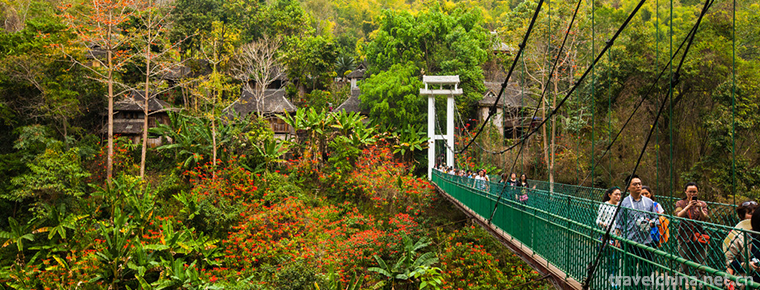
-
The Wanxian Moutain
Wanxianshan Scenic Area is located in the hinterland of Taihang Mountain in the northwest of Huixian City, Henan Province. It belongs to Nantaihang Tourism Resort, Xinxiang.
Views: 217 Time 2018-12-17 -
Jiankou Great Wall
The Great Wall is located in Badaohe Township, northwest of Huairou District, Beijing suburb. It is 1141 meters above sea level and about 30 kilometers away from Huairou County..
Views: 237 Time 2019-01-21 -
Genghis Khan Festival
Genghis Khan's sacrifice is a Mongolian custom of offering sacrifices to Genghis Khan. It originated in the Wokuotai era, and was formally issued in the Kublai Khan era. It stipulated various sacrific.
Views: 180 Time 2019-04-18 -
Carved lacquer art
Lacquer carving, traditional handicraft in Chongwen District, Beijing, is one of the national intangible cultural heritage..
Views: 139 Time 2019-04-27 -
Qiyang Opera
Qi Opera is one of the traditional local dramas in Hunan Province. It is also called Qiyang Band, Qiyang Opera in the early years of the Republic of China, and Qiyang Qidong Opera in the folk.
Views: 94 Time 2019-06-10 -
Taiji of Yi Nationality
Qitaiji is an ancient form of drama that only exists in Nugazhai village, Bandi Township, Weining Yi Hui Miao Autonomous County, Guizhou Province. Taiji is the transliteration of Yi, the word "Qi.
Views: 398 Time 2019-07-12 -
Yongxiu Yaya Opera
Yongxiu Ya Opera originated in Wu Town, one of the four famous towns in Jiangxi Province. It was born in the late Ming Dynasty and Ganbei Bench Opera. Because all of its female characters were played .
Views: 192 Time 2019-07-14 -
Tie Muer Buhua
Tie Muer Buhua (1286 - 1368). Yuan will be the first to stay. Rate troops to go Xiangyang He won the battle with song, fan and Wen Hu in the Shigi shoal beach. Later from Bo Yan Song, in Yang Luo Bao .
Views: 144 Time 2019-09-14 -
Miyaro scenic spot
Miyaro, translated as "fun Bazi", is a provincial scenic spot, located in the Zagunao River Valley of the upper reaches of Minjiang River in Lixian County, Aba Tibetan and Qiang Autonomous Prefecture.
Views: 105 Time 2020-11-07 -
Geographical environment of Deyang
Deyang City is located in the northeast edge of Chengdu Plain, with geographical coordinates of 30 ° 31 ′ - 31 ° 42 ′ N and 103 ° 45 ′ - 105 ° 15 ′ E. Deyang borders Fucheng District of Mianyang City in the northeast, Santai County of Mianyang City in the East.
Views: 308 Time 2020-12-14

